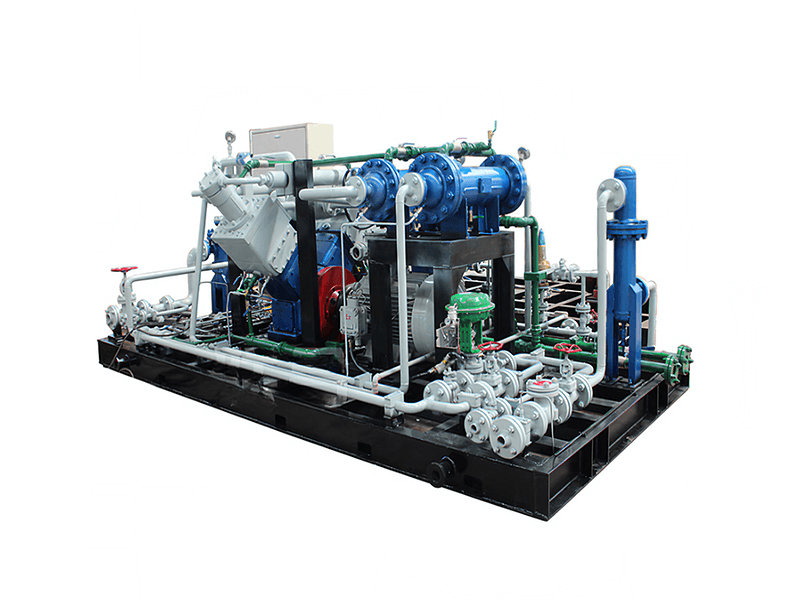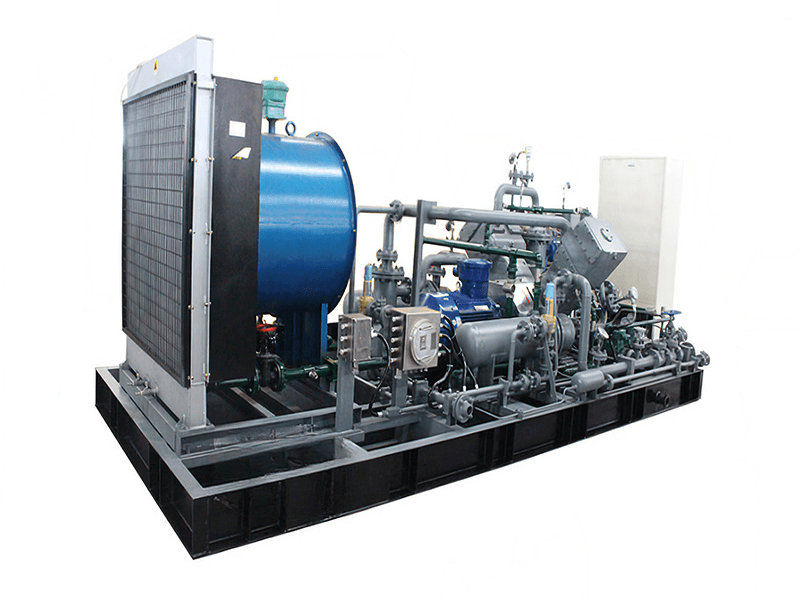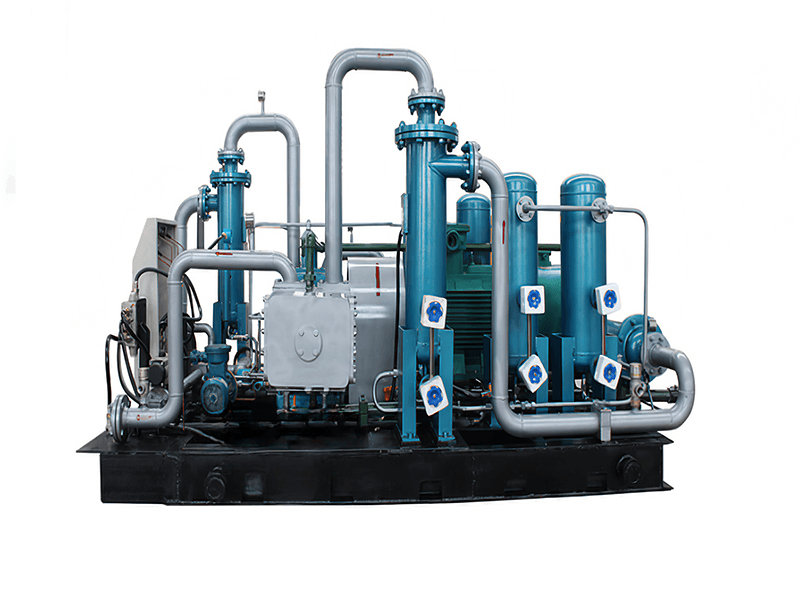In the low-temperature freezer of a Nordic supermarket, the ice crystals on the surface of salmon sparkle with a strange luster. The -28℃ cold chain is supported not by the traditional Freon unit, but by the CO₂ transcritical compressor roaring between the equipment. This environmental warrior, who uses greenhouse gases as weapons, is dragging the refrigeration industry into the zero-carbon era. When gaseous CO₂ is compressed to 80 times the atmospheric pressure at a critical temperature of 31.1℃, it enters a magical supercritical fluid state: its density is like that of a liquid, carrying a huge amount of cold, but its fluidity is like that of a gas, penetrating the pipeline without hindrance. This subversive thermodynamic dance has caused the energy consumption of the same cooling capacity to drop by 40%, and the global warming potential (GWP) is only 1/4000 of that of Freon.
The titanium alloy star rotor in the compressor is the engine of this change. The fifth-generation model of German Bitzer Company, through the overlapping meshing of three groups of rotors distributed at 120 degrees, pushes the CO₂ pressure to 120bar within 10 milliseconds. The secret lies in the nano-mirror polishing process: the rotor gap is controlled at 0.03 mm, and the leakage rate of high-pressure CO₂ is suppressed to 0.1 grams per hour in a space finer than a hair. In 2024, Danfoss will implant magnetic bearings into the rotor axis, and the mechanical friction loss will be close to zero, and the energy efficiency ratio will exceed 7.2 (traditional compressors are only 4.8), which is equivalent to saving 2 kilowatt-hours of electricity for every 10,000 kcal of refrigeration.

The taming of supercritical CO₂ requires a material revolution. When 80°C high-temperature and high-pressure fluid flushes the valve plate, ordinary steel will crack like a biscuit. The multi-layer gradient steel developed by Mitsubishi Heavy Industries (the outer layer of 316L stainless steel is corrosion-resistant, and the inner layer of titanium nitride is wear-resistant) has made the compressor life exceed 150,000 hours. In the cold chain logistics center on the Qinghai-Tibet Plateau in China, this material has withstood the test of a 60°C temperature difference between day and night, and the failure rate is 83% lower than that of Freon units. Even more cutting-edge is the self-lubricating ceramic coating developed by Gree: zirconium oxide particles release lubricating molecules during friction, allowing the compressor to start without preheating at minus 50°C, saving 35% of diesel consumption for the Antarctic research station.
The intelligent control system is like the nerve center of the compressor. Siemens' sCO₂ dynamic pressure regulation algorithm optimizes the compression ratio in real time through 300 pressure samplings per second. When the server load of a data center in Beijing suddenly increased, the system adjusted the exhaust pressure from 85 bar to 105 bar in 0.5 seconds, and the cooling capacity increased by 60% instantly without triggering a protective shutdown. "This is like the shifting logic of an F1 car, except that we are regulating the molecular kinetic energy." Project engineer Li Zhe explained in front of the control screen. This system has reduced the PUE value of Tencent Huailai Data Center to 1.15, saving 240 million kWh of electricity annually.
The real power of transcritical compressors lies in waste heat recovery. On the roof of a workshop in a Swiss cheese factory, silver pipes are outputting 75°C hot water - this is the waste heat captured by the compressor from the refrigeration cycle. Through the countercurrent design of the gas cooler, the heat energy released by supercritical CO₂ during cooling is recycled in stages, with an energy efficiency utilization rate of 98%. The factory uses this hot water to wash milk tanks, saving 270,000 cubic meters of natural gas annually and reducing carbon emissions by 800 tons. The Osaka Metro in Japan has upgraded it: braking electricity drives the CO₂ compressor, and the waste heat generated is used to heat the carriages. The entire system is recycled like a perpetual motion machine.
When the EU completely bans GWP>150 refrigerants in 2025, CO₂ compressors are opening up a new battlefield. The Great Southern Reef project in Australia sank 20 giant compressors to the seabed, using 4°C cold water in the deep sea to liquefy CO₂, increasing the carbon sequestration efficiency by 3 times; in the SpaceX Starship life support system, the micro transcritical compressor controls the cabin temperature in zero gravity, and the power consumption is only 1/6 of that of ground equipment. As predicted in the white paper of the International Institute of Refrigeration (IIR): "When humans bid farewell to Freon completely, CO₂ compressors will become the foundation of the temperature control world."

























